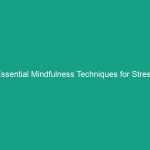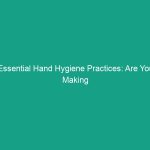Good Morning Team!
Today, we’re diving into a critical aspect of our Workplace Safety: Essential Dust Mask Fit Testing. This isn’t just another Safety procedure; it’s about ensuring that we all go home safe and healthy at the end of the day. With the right information and practices, we can minimize risks associated with airborne contaminants and make our work Environment safer.
Understanding Essential Dust Mask Fit Testing
So, what exactly is dust mask fit testing? In simple terms, it’s a procedure to ensure that your dust mask fits properly and creates an effective seal around your face. This is crucial because a poorly fitting mask can let harmful particles enter, negating the protection it’s supposed to provide. Fit testing is not just a one-time task; it should be performed regularly and whenever there’s a change in the mask type or the user’s facial structure.
Many employees mistakenly believe that as long as they wear a mask, they are protected. However, without proper fit testing, you could be exposing yourself to dangerous dust and other airborne contaminants. Remember, a good fitting mask is your first line of defense!
Key Hazards, Risks, and Safety Considerations
Now let’s discuss some specific Hazards associated with inadequate dust mask fit testing:
- Inhalation of Harmful Particles: Dust and particles can lead to respiratory issues, chronic illnesses, and even long-term health problems.
- Reduced Work Efficiency: If you are not properly protected, you may become fatigued more quickly, reducing your efficiency and productivity.
- Increased Risk of Accidents: Poor health can lead to a lack of focus and increased likelihood of accidents.
Ignoring the importance of fit testing can have real-world consequences. For example, a worker who experiences respiratory distress due to inadequate mask protection could face long-term health issues, which might lead to extended time off work or even permanent disability.
Best Practices, Procedures, & Actionable Advice
Here are some Best Practices to ensure effective dust mask fit testing:
Step-by-Step Fit Testing Procedure
- Select the Right Mask: Ensure the mask you are using is suitable for the type of dust exposure you might encounter.
- Clean Your Face: Before testing, wash your face to remove any oils or makeup that might affect the seal.
- Wear the Mask Properly: Position the mask correctly on your face, ensuring it covers your nose and mouth completely.
- Perform the Fit Test: Follow the specific protocols for your mask type (e.g., qualitative or quantitative fit testing).
- Check for Leaks: After fitting, perform a seal check by inhaling and exhaling to ensure there are no leaks.
- Document Results: Keep a record of your fit testing results for compliance and future reference.
For example, during a recent fit test in our facility, we discovered that several employees were using masks that did not fit properly, leading to potential risks. After re-testing with the correct Procedures and providing properly fitting masks, we saw a significant improvement in overall air quality and employee comfort.
Regulations, Standards, and Compliance
It’s important to be aware of the Regulations governing dust mask fit testing. The Occupational Safety and Health Administration (OSHA) mandates that employers must ensure proper respiratory protection through fit testing. This includes:
- Conducting fit tests prior to initial use and at least annually thereafter.
- Providing Training on how to use and maintain respiratory protection equipment properly.
- Ensuring compliance with American National Standards Institute (ANSI) standards.
Compliance is not just about following rules; it’s about protecting yourself and your colleagues. When everyone adheres to these Standards, we create a safer workplace for all.
Employee Engagement & Discussion
Now that we’ve covered the basics, let’s open the floor for discussion. Here are a few questions to think about:
- What challenges have you faced with your dust masks?
- Have you ever experienced discomfort or issues with mask fit?
- What suggestions do you have for improving our fit testing process?
Your feedback is invaluable. By sharing your experiences, we can work together to find solutions and enhance our safety protocols.
Conclusion & Key Takeaways
In conclusion, proper dust mask fit testing is essential for ensuring maximum protection against harmful airborne particles. Remember:
- Fit testing should be done regularly.
- Always use the correct mask for your specific tasks.
- Document results for compliance and safety reviews.
Let’s prioritize our safety and the safety of our colleagues by adhering to these practices. Thank you for your attention and commitment to maintaining a safe work environment. Together, we can ensure everyone goes home healthy and safe!


